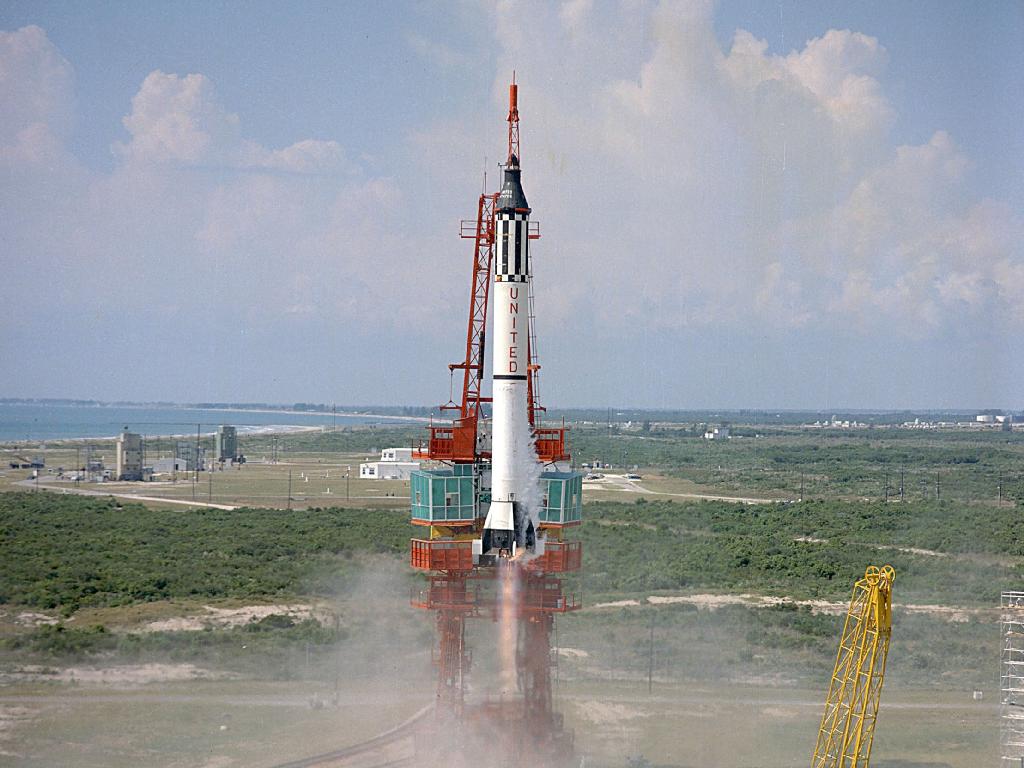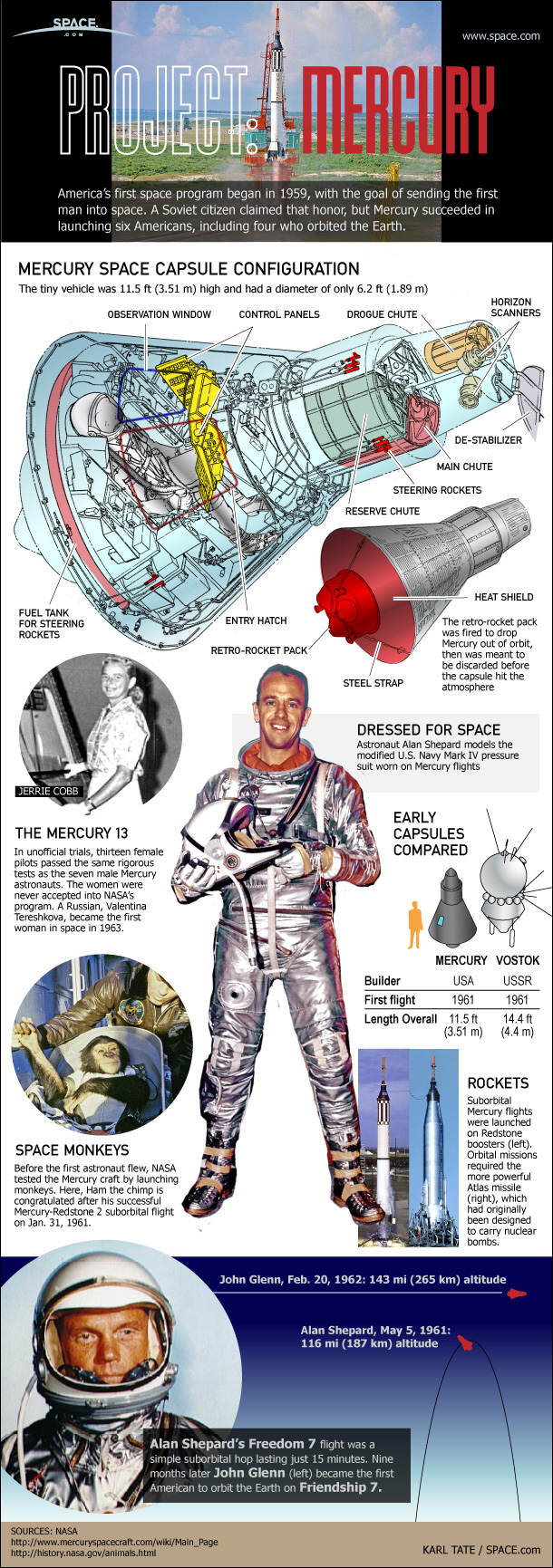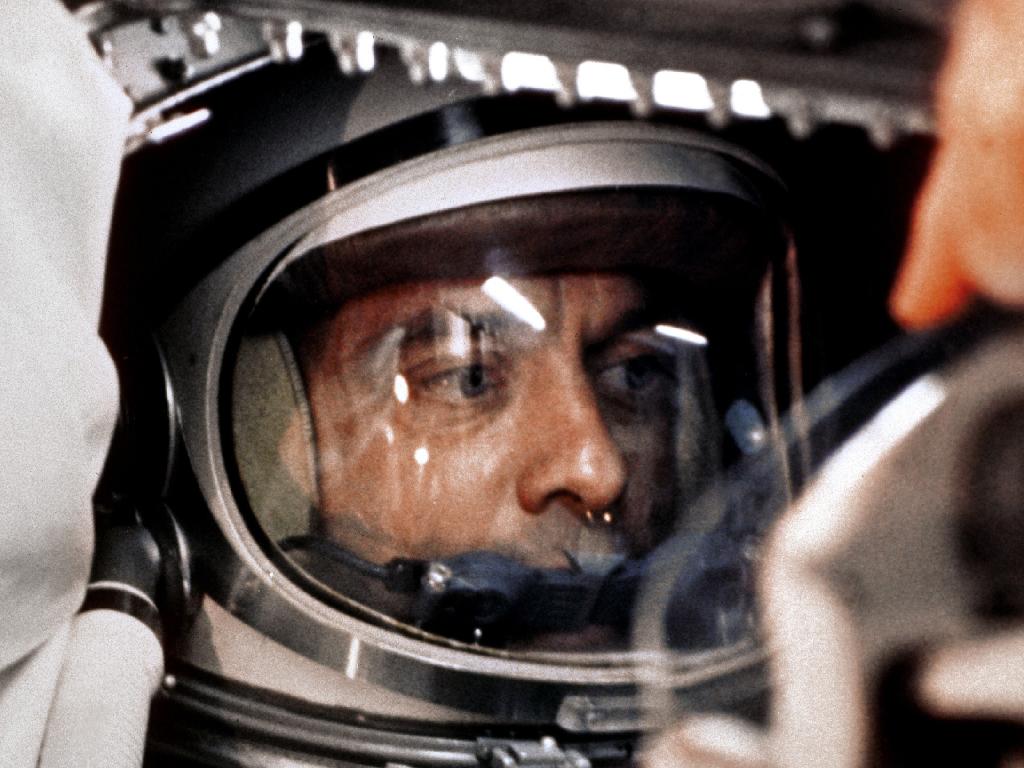
When Alan Shepard launched on his suborbital flight on May 5, 1961, he became just the second person ever to reach space. But he thought he could've been the first, and he was frustrated when that didn't happen, experts say.
Cosmonaut Yuri Gagarin beat Shepard to space three weeks earlier, blasting off on an orbital flight on April 12, 1961. In Shepard's view, this Soviet space race victory could have been prevented, had NASA been more aggressive. The space agency had delayed his mission several times to perform additional tests.
"I think he was a little bit frustrated with NASA for, in his mind, being a little bit overly cautious," said Neal Thompson, author of "Light This Candle: The Life and Times of Alan Shepard" (Three Rivers Press, 2005). "He was a little bit pissed off that they delayed it so much that the Russians were able to get up there first." [Photos: Freedom 7, America's 1st Human Spaceflight]
Problems with the rocket

Shepard launched into space inside a Mercury capsule named Freedom 7, which sat atop a Redstone booster. The success of his mission was anything but assured, as various problems with the Redstone had cropped up on previous test flights. [Video: Flash Back to America's First Spaceflight]
An unmanned Mercury-Redstone test flight in November 1960, for example, got just 4 inches (10 cm) off the launchpad. Another unmanned flight a month later went well, but other rocket issues emerged in January 1961 on a "semi-manned" flight that launched a chimp named Ham into suborbital space.
These problems concerned NASA and chief rocket designer Wernher von Braun. So, late in the game, the space agency decided to insert one more unmanned test flight into the Mercury project's schedule.
Get the Space.com Newsletter
Breaking space news, the latest updates on rocket launches, skywatching events and more!
That flight took place on March 24, 1961. Everything worked well, clearing the way for Shepard's manned mission, which had been pushed back to May as a result.
While the additional test was done to help ensure Shepard's safety, he seems to have felt NASA was dilly-dallying a bit too much, according to Thompson.

"In the book, I have a quote from him that says, 'We had 'em by the short hairs,'" Thompson told SPACE.com. "He felt like we had the capability to do it, and we nitpicked for too long and allowed ourselves to get beat."
Not one to dwell on the past
While Shepard was apparently frustrated that Gagarin beat him into space, he remained very proud of his achievement, and of his role in kicking off the American human spaceflight program, according to Thompson. [Video: Yuri Gagarin: First Man in Space]
"He always did say that he was proudest of being selected to go first," Thompson said. "And 'selected' is key."
Gagarin's victory may have bothered Shepard some, but it didn't devastate him. He wasn't the type of person to look back, after all — or to dwell on the past.
For example, after his history-making flight, Shepard developed an inner-ear disorder that grounded him for years. But he eventually bounced back, becoming the fifth person to walk on the moon as part of the Apollo 14 mission in 1971. He accomplished this at the age of 47, and he remains the oldest person ever to set foot on the lunar surface.
And after his astronaut career, Shepard continued looking forward, becoming a successful businessman.
Shepard "just plowed ahead," Thompson said. "He just kept busy. He became, according to most of the astronauts, the first millionaire astronaut, because he was very successful in business. He was just sort of exuberant in everything he did and pretty much successful in everything he did."
NASA looked forward, too
Gagarin's flight was a public-relations coup for the Soviet Union in its Cold War space race against the United States. But the news, while doubtless disappointing, didn't cause a great deal of panic in NASA circles, historians say.
Rather, the agency kept developing its human spaceflight program, adhering to a schedule that it felt would reap the most long-term rewards.
"They had a program in place, and it was making good headway," said Roger Launius, space history curator at the Smithsonian's National Air and Space Museum. "And they knew they were on the verge of flying within a very short period of time."
That's not to say Gagarin's mission had no impact on NASA. Rather, his achievement, coupled with another Soviet victory — the October 1957 launch of Sputnik, the world's first artificial satellite — helped spur NASA on to perhaps its greatest achievement: Putting a man on the moon in 1969. [Giant Leaps: Top Milestones in Human Spaceflight]
President John F. Kennedy, after all, announced this ambitious goal to the nation on May 25, 1961, just six weeks after Gagarin landed.
Gagarin's flight was important in helping to shape this decision, Launius said, but so were other factors. One of these was the disastrous Bay of Pigs invasion — an unsuccessful attempt by the U.S. to overthrow the Cuban government of Fidel Castro, which was backed by the Soviet Union.
The invasion began on April 17, 1961 — just five days after Gagarin's mission — when a small group of CIA-trained Cuban exiles stormed the island nation. They were defeated within three days.
"That really did send the Kennedy administration over the edge, saying, 'Oh my God, we've got to do something to look like we are as good as the Russians," Launius told SPACE.com. "And the result of that was the decision to go to the moon."
You can follow SPACE.com senior writer Mike Wall on Twitter: @michaeldwall. Follow SPACE.com for the latest in space science and exploration news on Twitter @Spacedotcom and on Facebook.
Join our Space Forums to keep talking space on the latest missions, night sky and more! And if you have a news tip, correction or comment, let us know at: community@space.com.

Michael Wall is a Senior Space Writer with Space.com and joined the team in 2010. He primarily covers exoplanets, spaceflight and military space, but has been known to dabble in the space art beat. His book about the search for alien life, "Out There," was published on Nov. 13, 2018. Before becoming a science writer, Michael worked as a herpetologist and wildlife biologist. He has a Ph.D. in evolutionary biology from the University of Sydney, Australia, a bachelor's degree from the University of Arizona, and a graduate certificate in science writing from the University of California, Santa Cruz. To find out what his latest project is, you can follow Michael on Twitter.









